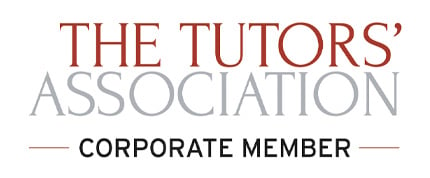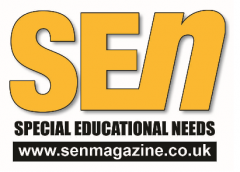Many things can get in the way of a child or young person’s ability to learn. It could be that they have a condition such as dyslexia or ADHD, or they may be facing other challenges such as changing schools, their parents may be separating, or perhaps they have a long-term illness.
Another major barrier is having a ‘learning disability’. Although it can sometimes be difficult for parents to know the difference between this and a ‘learning difficulty’, according to the charity MENCAP, a learning disability is:
Where a person has some form of lifelong, intellectual impairment which makes it harder for them to complete everyday tasks.
Learning disabilities can be mild to profound. Associated conditions include:
- Down’s Syndrome
- Cerebral palsy
- Global developmental delay
- sometimes autism
Specialist tutor, Kirsten, has worked with children with a wide range of learning disabilities and difficulties and currently works part-time at a special school. She became interested in special needs 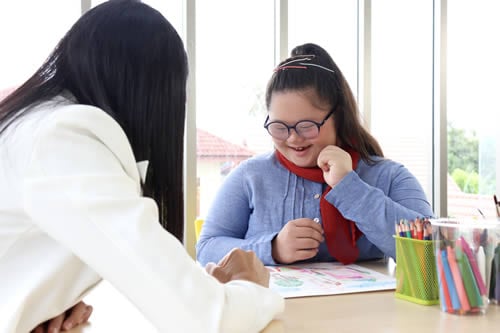 at a summer play-scheme while studying to be a primary teacher. “I absolutely loved it,” she says. “I was fascinated to see the different ways people learn. When you get results, it’s more rewarding.”
at a summer play-scheme while studying to be a primary teacher. “I absolutely loved it,” she says. “I was fascinated to see the different ways people learn. When you get results, it’s more rewarding.”
Currently, she works with one student with Down’s Syndrome. “I’ve learned so much from him. He’s so enthusiastic,” she continues. “He’s currently interested in werewolves and dinosaurs so I tailor all his lessons to include those things. People often underestimate the cognitive abilities of someone with Down’s Syndrome. They definitely can make progress – it’s about acknowledging and celebrating small steps.”
Computer technology can also make learning easier for people with learning disabilities, Kirsten points out. Using a keyboard or voice-recognition software, for example, can help someone document their ideas if writing by hand is difficult.
“But it’s important to remember that children are not their disability – they are people,” she concludes.
Fellow-tutor Laura originally trained as a mainstream teacher in Canada and is now involved in setting up a new, neurodiverse school in the UK. Like Kirsten, she also discovered a passion for working with kids with special needs at summer camps. “It helps if you shift your perspective to understand the student,” she comments. “You have to have empathy and meet them on their level. Some kids, for example, respond well to reward charts but for others, they’re too much pressure.”
Much of the education system, Laura points out, concentrates on what children can’t do when it would be more helpful, she believes, to focus instead on someone’s strengths. “We need a positive attitude around learning difficulties and disabilities. Instead of dragging someone up to the level we think, they should be at, why not focus on what they can do?”
“For example, I remember two students I had in the past,” she continues. “Both left school barely able to write their names. One turned out to be a fantastic hairdresser, the other was an incredible car mechanic.”
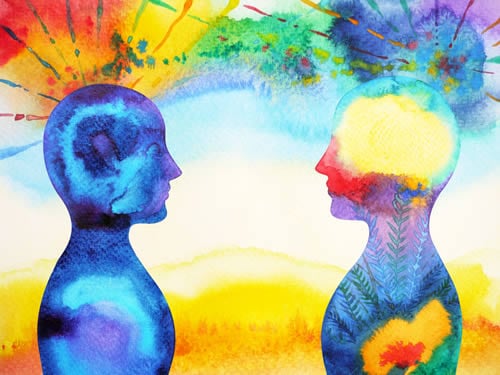 The theme for this year’s Learning Disability Awareness Week is art and creativity. Hephzibah Kaplan is an art psychotherapist and the director of the London Art Therapy Centre, an organisation that offers this practice to adults, children and families as well as people with learning disabilities.
The theme for this year’s Learning Disability Awareness Week is art and creativity. Hephzibah Kaplan is an art psychotherapist and the director of the London Art Therapy Centre, an organisation that offers this practice to adults, children and families as well as people with learning disabilities.
Art therapy is a particular application of the visual arts which, she explains, allows anyone, even people who are very introverted or non-verbal, for example, to express thoughts and feelings through creating images or making things. Doing so alongside a therapist, she says, enables that person to feel acknowledged, supported and to release pent-up feelings.
“For example, abuse is very common for people with learning disabilities,” Kaplan continues, “which is a difficult subject for most people. Art therapy gives them a way of describing what happened and how they felt, in a different form.”
On a more everyday level, drawing, painting and making things just for fun is valuable for everyone, whether or not they have a learning disability, she maintains. “The creative process is so important to humans whether that’s gardening, decorating food or painting a picture. It’s about bringing something into existence that wasn’t there before.”
Creating art shouldn’t be about a person’s ability to produce a perfect drawing of, for example, a bowl of fruit, Kaplan adds. Rather, she says, the most important thing is what the person wants to express. “You can look at Mark Rothko’s black and dark red shapes and see depression and Jackson Pollock’s splatter paintings and sense the energy,” she points out.
“Artwork should never be thrown in the bin. It makes us part of the world. It says that we matter.”


